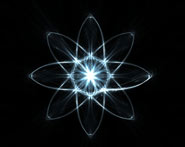


 الفيزياء الكلاسيكية
الفيزياء الكلاسيكية
 الكهربائية والمغناطيسية
الكهربائية والمغناطيسية
 علم البصريات
علم البصريات
 الفيزياء الحديثة
الفيزياء الحديثة
 النظرية النسبية
النظرية النسبية
 الفيزياء النووية
الفيزياء النووية
 فيزياء الحالة الصلبة
فيزياء الحالة الصلبة
 الليزر
الليزر
 علم الفلك
علم الفلك
 المجموعة الشمسية
المجموعة الشمسية
 الطاقة البديلة
الطاقة البديلة
 الفيزياء والعلوم الأخرى
الفيزياء والعلوم الأخرى
 مواضيع عامة في الفيزياء
مواضيع عامة في الفيزياء|
Read More
Date: 24-5-2016
Date: 7-11-2020
Date: 7-11-2020
|
Radioactive Decay Rates
Radioactivity is the property of certain nuclides of spontaneously emitting particles or gamma radiation. The decay of radioactive nuclides occurs in a random manner, and the precise time at which a single nucleus will decay cannot be determined. However, the average behavior of a very large sample can be predicted accurately by using statistical methods. These studies have revealed that there is a certain probability that in a given time interval a certain fraction of the nuclei within a sample of a particular nuclide will decay. This probability per unit time that an atom of a nuclide will decay is known as the radioactive decay constant, λ. The units for the decay constant are inverse time such as 1/second, 1/minute, 1/hour, or 1/year. These decay constant units can also be expressed as second-1, minute-1, hour-1, and year-1.
The activity (A) of a sample is the rate of decay of that sample. This rate of decay is usually measured in the number of disintegrations that occur per second. For a sample containing millions of atoms, the activity is the product of the decay constant and the number of atoms present in the sample.
The relationship between the activity, number of atoms, and decay constant is shown in Equation (1-1).
A = λ N (1-1)
where:
A = Activity of the nuclide (disintegrations/second)
λ = decay constant of the nuclide (second-1)
N = Number of atoms of the nuclide in the sample
Since λ is a constant, the activity and the number of atoms are always proportional.



|
|
|
|
دراسة يابانية لتقليل مخاطر أمراض المواليد منخفضي الوزن
|
|
|
|
|
|
|
اكتشاف أكبر مرجان في العالم قبالة سواحل جزر سليمان
|
|
|
|
|
|
|
اتحاد كليات الطب الملكية البريطانية يشيد بالمستوى العلمي لطلبة جامعة العميد وبيئتها التعليمية
|
|
|